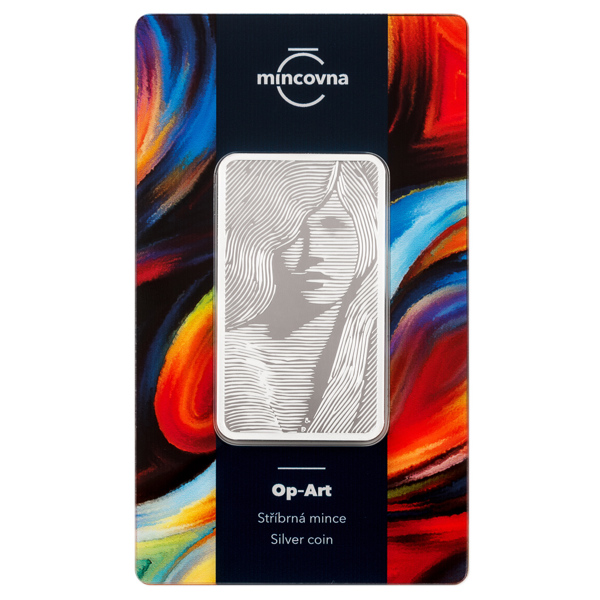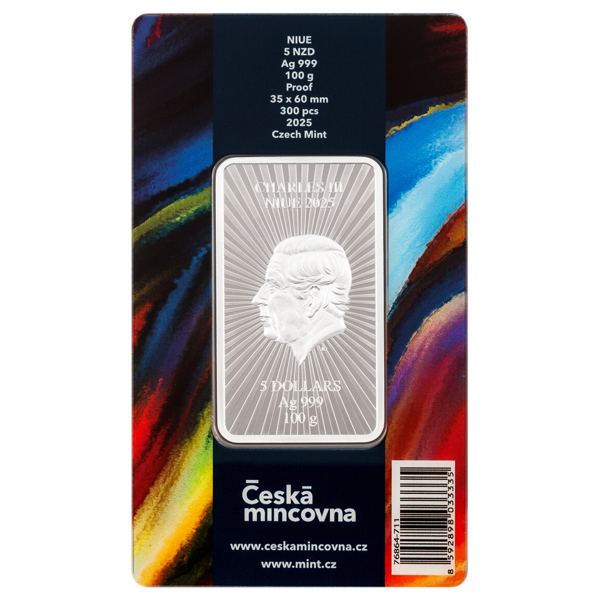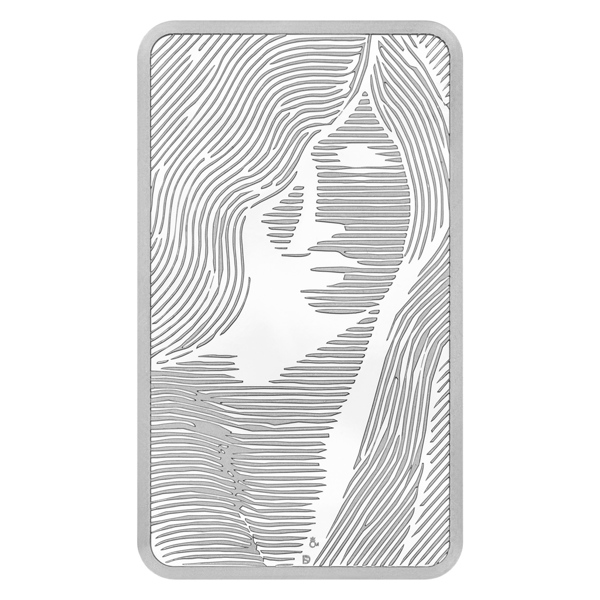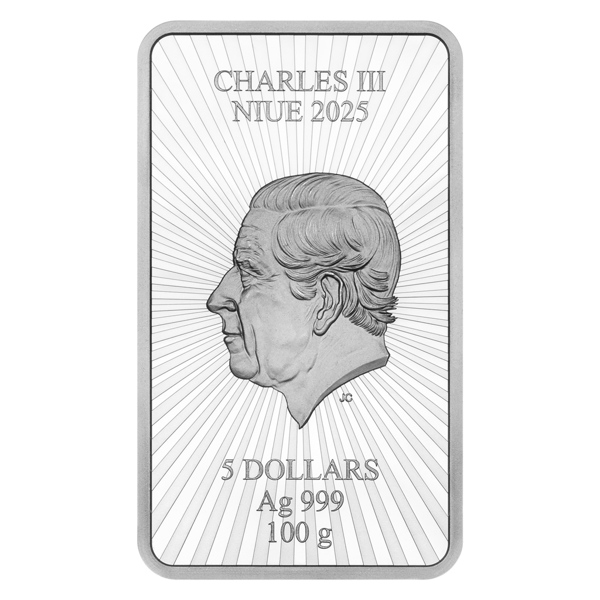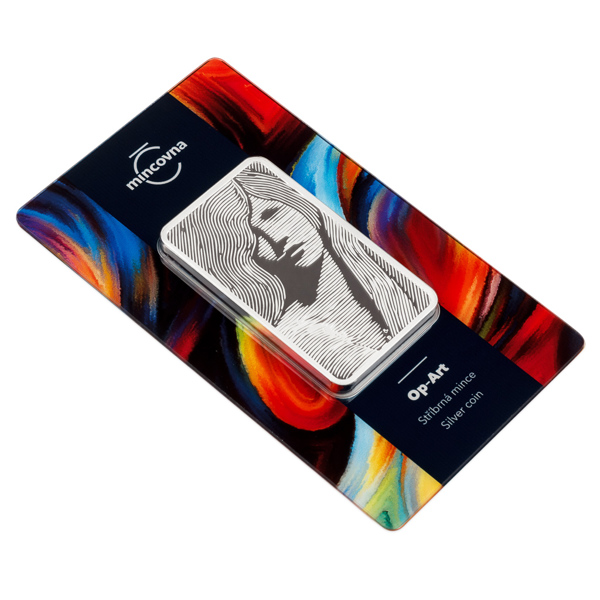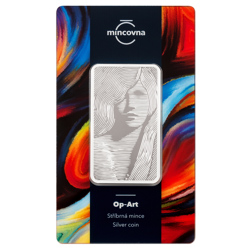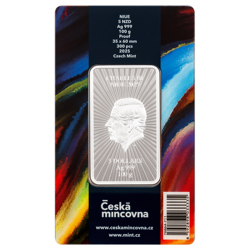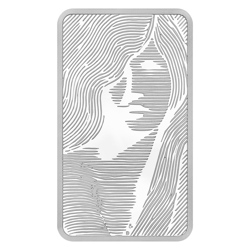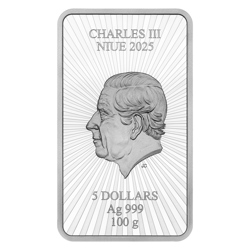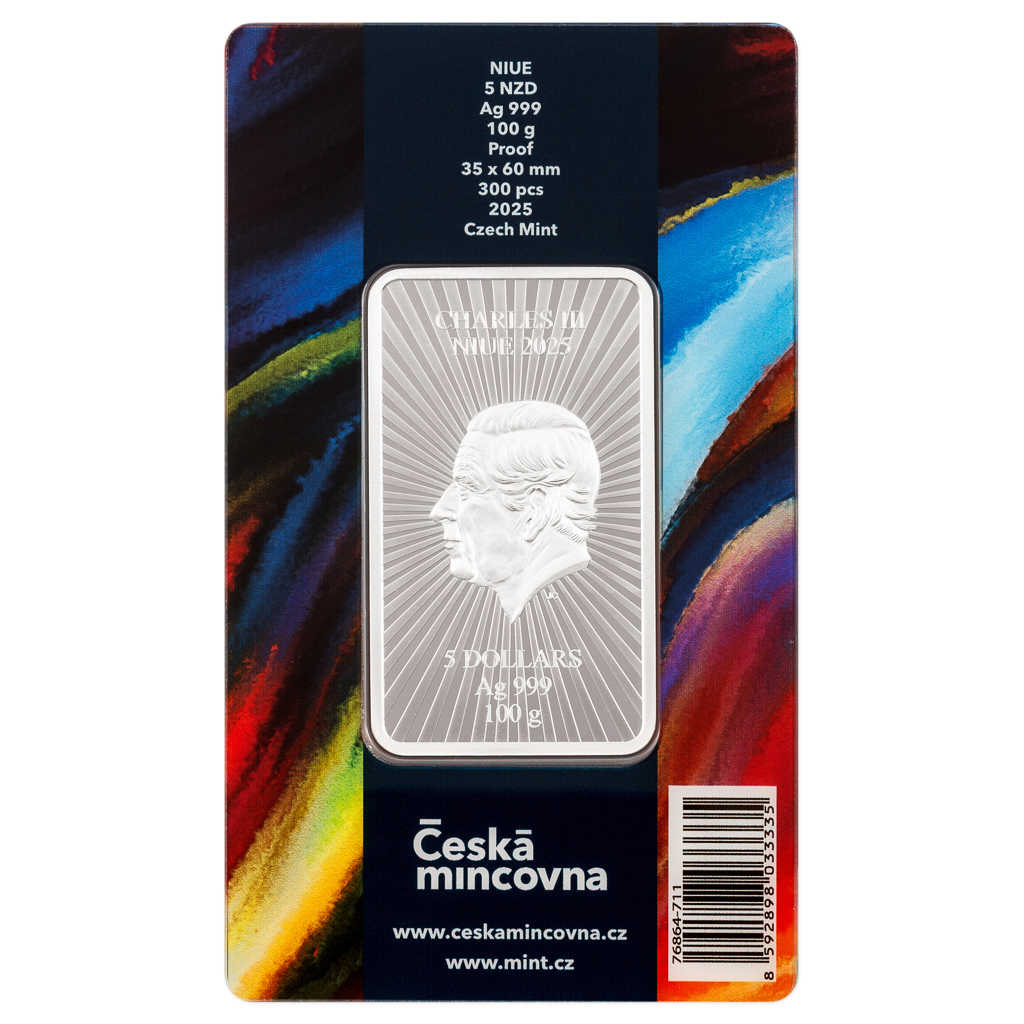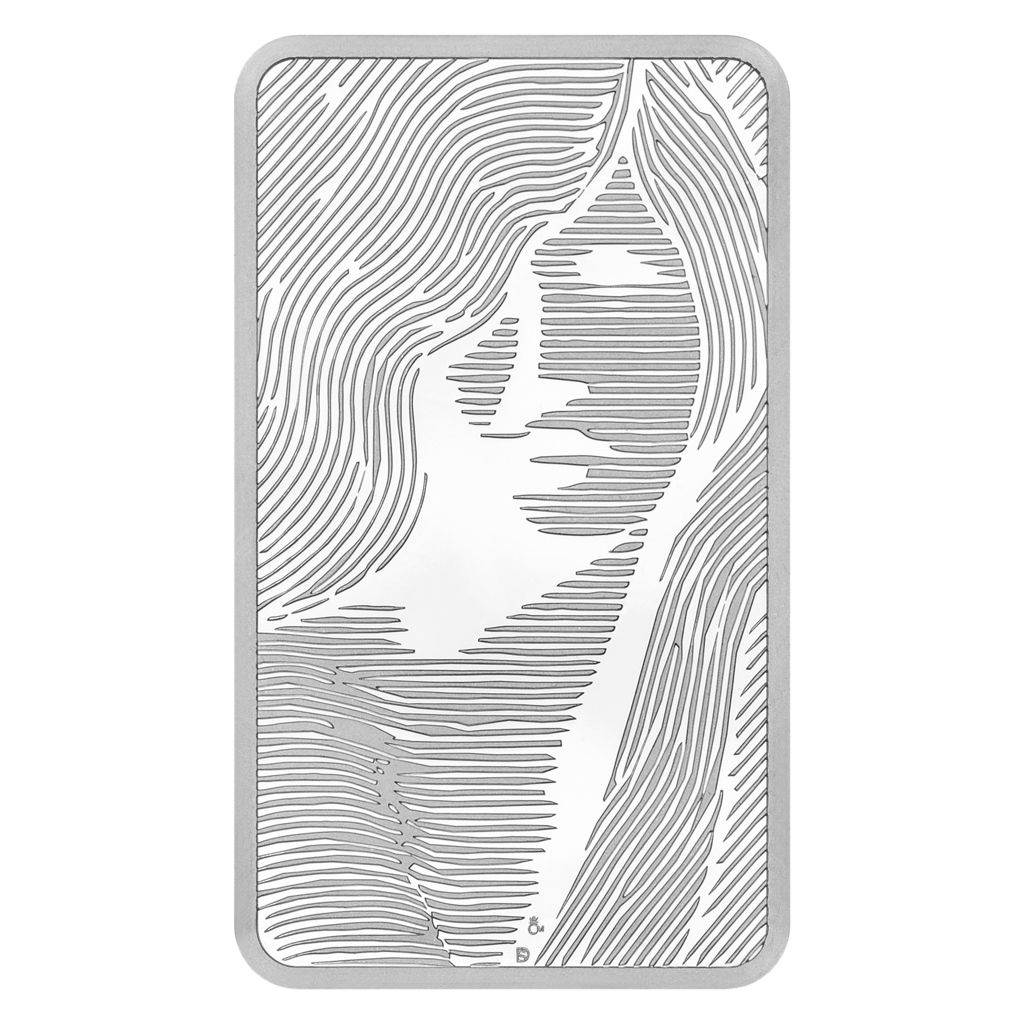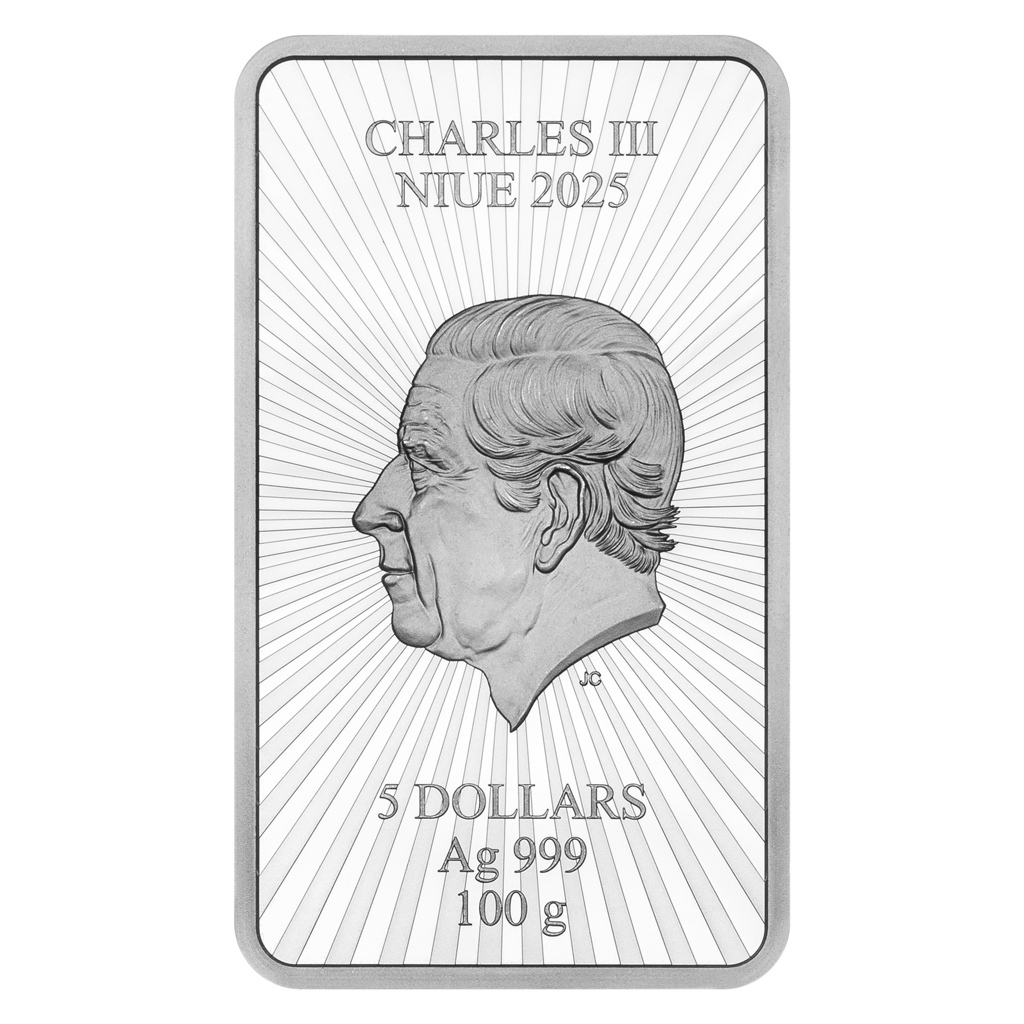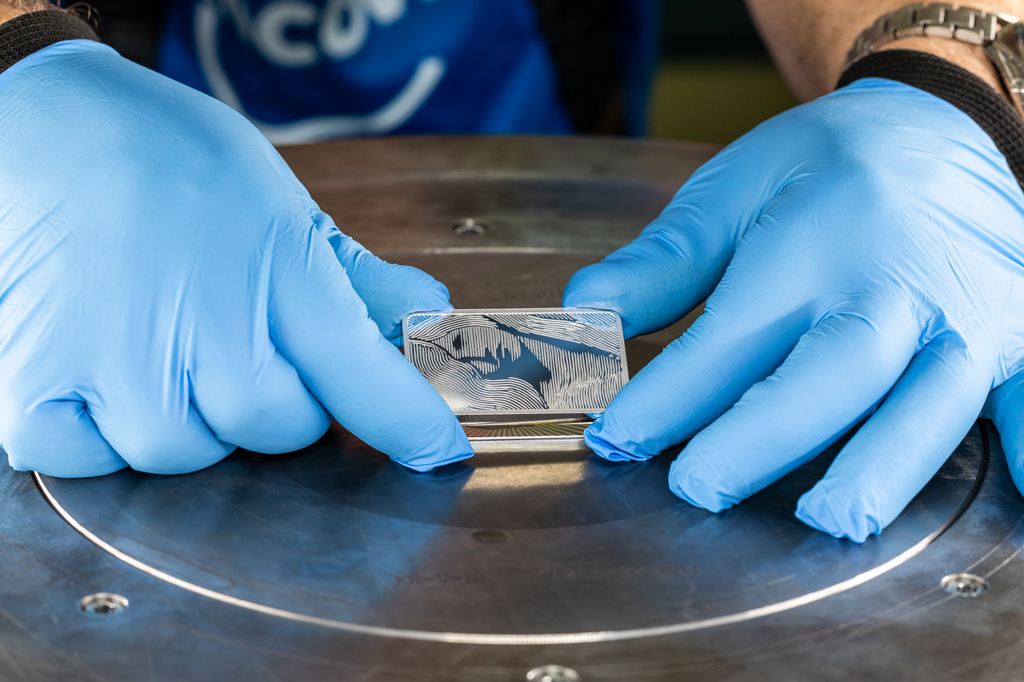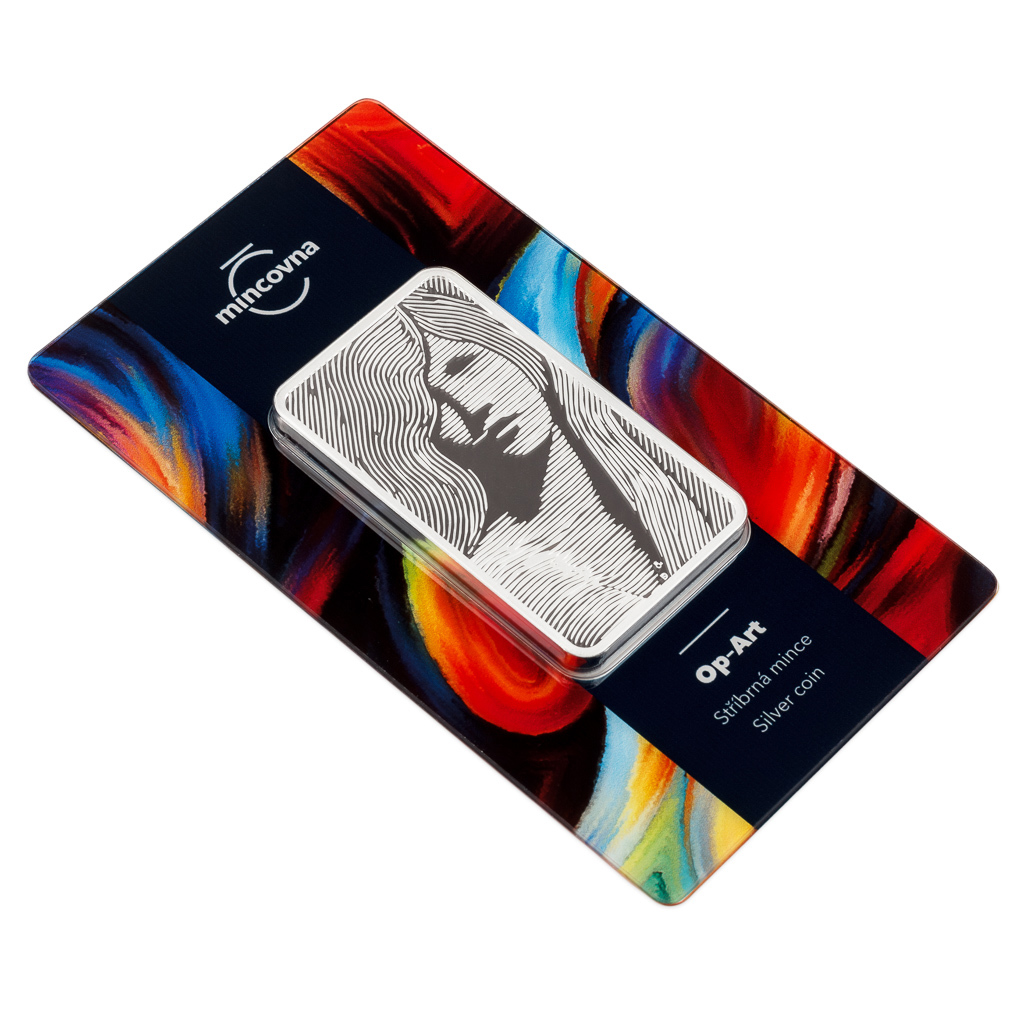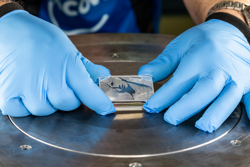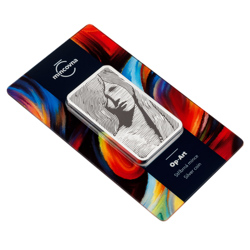Silver 100 g coin Modern Art - Op-Art proof
Personal pickup at the store
Product description
In the 20th century, civilisation underwent rapid change. Society, the economy and politics were transformed, and culture, which is a mirror of all human activity, could not lag behind. This gave rise to modern art full of individuality, independence and experimentation. Over the decades, a whole range of modern art trends and movements emerged, to which the Czech Mint's new cycle pays tribute. The first silver coin is designed in the style of op-art.
Op-art is an unusual art movement that emerged in the late 1950s. Its name comes from the English words “optical art“, which suggests that it uses knowledge from fields such as geometry and optics to create visual illusions. Op art artists work mainly with geometric shapes, grids, overlapping lines and contrasting colours, which allow them to create the impression of movement and instability. The first works were mostly black and white and consisted of interconnected lines, curves and structures that gave the impression of waves, rotation or flickering. Rather than emotions, the artists primarily attacked the viewer's sense of sight with their images, proving that even without classic brushstrokes, a static image can appear dynamic. Although some critics dismissed op art as a mere fairground attraction, it quickly became popular with the general public and its influence spread to design, advertising and fashion, where it became one of the symbols of the 1960s.
Medal maker Štěpánka Doležalová dedicated the reverse side of the coin to a sensual female portrait that emerges from a seemingly chaotic jumble of curves and lines. Alternating lines also form the decoration on the obverse side. As coins of the Czech Mint are issued with a foreign licence from the island of Niue, they also bear the portrait of King Charles III, the nominal value of 5 DOLLARS (NZD) and the year of issue 2025.
The 100-gram silver coin has an unusual shape – it is rectangular, resembling a painter's canvas...
 čeština
čeština
 slovenčina
slovenčina
 english
english
